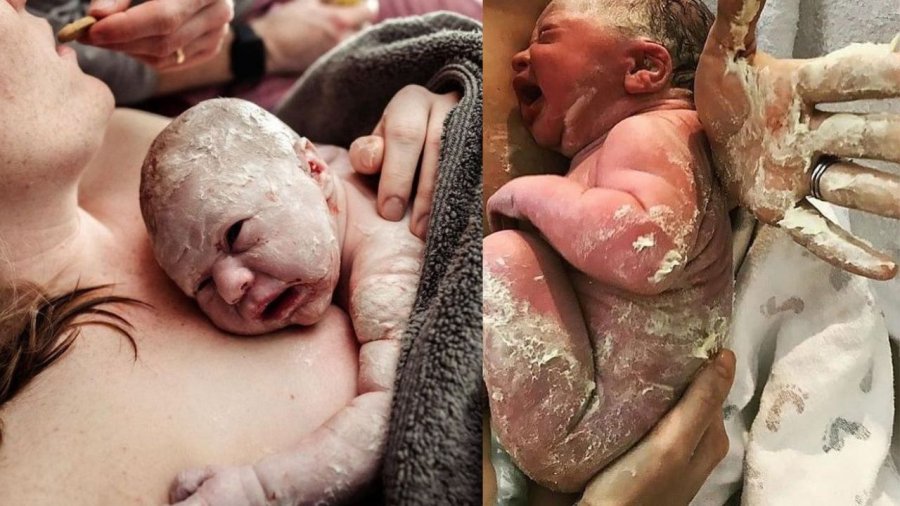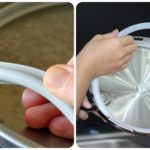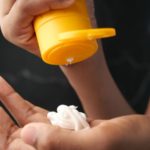Newborn babies come into the world with different amounts of a white, waxy substance covering their skin. Some babies have a thick and abundant layer, while others are born with very little of this substance. Many people are unaware of this and may mistakenly think it is “dirt” on the baby’s skin. The substance on the baby’s skin is actually a white, cheese-like substance that serves as a protective layer for the baby’s skin.

From the early months of pregnancy, and most notably in the later months, this substance begins to form. This substance is primarily composed of water, 10% fat, and 9% protein. This substance forms a protective layer on the baby’s skin while in the amniotic fluid for 9 months and 10 days, preventing the skin from wrinkling. This is because the fatty layer prevents water from easily passing through. Imagine an adult without this protective layer soaking in water for a long time – their skin would become wrinkled. However, a fetus does not experience this because of this substance. The protective layer of the baby’s delicate skin prevents excessive water absorption from the amniotic fluid, keeping the skin hydrated. This substance also acts as a protective barrier, reducing the risk of infection for the baby.
As the substance develops fully, it becomes thicker. As the due date approaches, this layer gradually thins. Therefore, after birth, depending on the baby’s age, premature or full-term, older or younger, the amount of this substance varies. Even babies born on the same day can have different amounts of this substance on their skin, depending on their individual development in the womb.

In addition, this substance has various other functions:
Assisting in the process of delivery: Due to its slippery nature, this substance facilitates an easier delivery, aiding in reducing friction between the baby and the mother’s birth canal.
Protecting against infection: This substance provides protection against infection for the baby during pregnancy and the birthing process. When newborns first arrive, this substance also serves to protect them during their initial days of exposure to a new environment, which contains more bacteria than the amniotic fluid. This demonstrates how this substance helps the baby adapt better to their surroundings.
Helping regulate the baby’s body temperature: Upon emerging from the womb, a newborn needs time to adjust to regulating their body temperature. The layer of this substance on the baby’s skin helps them stabilize their body temperature after birth. Consequently, many hospitals do not immediately clean off this substance, as it aids in maintaining the baby’s body temperature more effectively.

Providing a sense of comfort for the baby: This layer of substance acts as a protective companion for the baby during their initial days, making them feel as if they are still protected within the amniotic sac. As a result, newborns may experience less crying in their early days and appear more at ease.
The substance on the baby’s skin gradually disappears after several baths. Typically, it is cleaned off a few hours after birth. Some recent studies recommend delaying the cleaning of this substance, waiting at least 2 hours after birth before bathing the baby, and waiting a full 24 hours before taking the baby for their first bath. Consequently, after birth, doctors usually clean off any traces of meconium (stool) on the baby’s skin and then encourage skin-to-skin contact with the mother before bathing the baby later. In some cases where the baby is born with a significant amount of meconium, an early bath may be necessary.
There is a traditional belief among some people that consuming sugarcane juice or various other foods during pregnancy can result in a cleaner baby. However, this is unnecessary and does not have any such effect. Furthermore, once one understands the multiple functions of this substance, it is unlikely that any mother would want to rush and clean it off their baby.



































